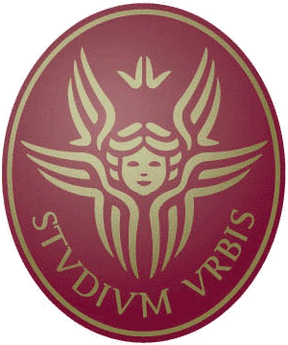Sapienza University of Rome
Public research university in Rome, Italy
Sapienza University of Rome (Italian: Sapienza – Università di Roma), also called simply Sapienza, is a public research university located in Rome, Italy. Founded in 1303, it is one of the oldest universities in the world and the largest in Europe by enrollment, with over 115,000 students. Sapienza is a member of several international university networks and is renowned for its research and academic excellence.
History[edit | edit source]
The university was established on April 20, 1303, by Pope Boniface VIII as the Studium Urbis. It was intended to be a center of higher learning for the city of Rome. Over the centuries, Sapienza has grown and evolved, becoming a leading institution in various fields of study.
In the 17th century, the university was moved to the Palazzo della Sapienza, where it remained until the 1930s. The building is notable for its beautiful courtyard and the church of Sant'Ivo alla Sapienza, designed by Francesco Borromini.
In 1935, the university moved to its current main campus in the San Lorenzo district, designed by architect Marcello Piacentini. This move was part of a broader effort to modernize the university and expand its facilities.
Campus[edit | edit source]
The main campus of Sapienza University is located in the San Lorenzo district of Rome. It covers an area of 44 hectares and includes numerous buildings, libraries, and research centers. The campus is a hub of academic and social activity, with facilities for students and staff.
The university also has several satellite campuses and research centers throughout Rome and the surrounding region, offering a wide range of programs and courses.
Academics[edit | edit source]
Sapienza University offers a comprehensive range of undergraduate, graduate, and doctoral programs across various disciplines. The university is organized into 11 faculties, including Humanities, Engineering, Medicine, Law, and Political Science.
The university is known for its strong emphasis on research, with numerous research centers and institutes dedicated to advancing knowledge in various fields. Sapienza is particularly renowned for its contributions to physics, engineering, and humanities.
Notable Alumni[edit | edit source]
Sapienza University has produced many notable alumni who have made significant contributions to various fields. Some of the most distinguished alumni include:
- Maria Montessori, an Italian physician and educator best known for the philosophy of education that bears her name.
- Federico Fellini, an acclaimed Italian film director and screenwriter known for his distinctive style.
- Enrico Fermi, a physicist who created the world's first nuclear reactor and was awarded the Nobel Prize in Physics in 1938.
- Evangelista Torricelli, an Italian physicist and mathematician, best known for inventing the barometer.
Related Pages[edit | edit source]
Search WikiMD
Ad.Tired of being Overweight? Try W8MD's physician weight loss program.
Semaglutide (Ozempic / Wegovy and Tirzepatide (Mounjaro / Zepbound) available.
Advertise on WikiMD
|
WikiMD's Wellness Encyclopedia |
| Let Food Be Thy Medicine Medicine Thy Food - Hippocrates |
Translate this page: - East Asian
中文,
日本,
한국어,
South Asian
हिन्दी,
தமிழ்,
తెలుగు,
Urdu,
ಕನ್ನಡ,
Southeast Asian
Indonesian,
Vietnamese,
Thai,
မြန်မာဘာသာ,
বাংলা
European
español,
Deutsch,
français,
Greek,
português do Brasil,
polski,
română,
русский,
Nederlands,
norsk,
svenska,
suomi,
Italian
Middle Eastern & African
عربى,
Turkish,
Persian,
Hebrew,
Afrikaans,
isiZulu,
Kiswahili,
Other
Bulgarian,
Hungarian,
Czech,
Swedish,
മലയാളം,
मराठी,
ਪੰਜਾਬੀ,
ગુજરાતી,
Portuguese,
Ukrainian
Medical Disclaimer: WikiMD is not a substitute for professional medical advice. The information on WikiMD is provided as an information resource only, may be incorrect, outdated or misleading, and is not to be used or relied on for any diagnostic or treatment purposes. Please consult your health care provider before making any healthcare decisions or for guidance about a specific medical condition. WikiMD expressly disclaims responsibility, and shall have no liability, for any damages, loss, injury, or liability whatsoever suffered as a result of your reliance on the information contained in this site. By visiting this site you agree to the foregoing terms and conditions, which may from time to time be changed or supplemented by WikiMD. If you do not agree to the foregoing terms and conditions, you should not enter or use this site. See full disclaimer.
Credits:Most images are courtesy of Wikimedia commons, and templates, categories Wikipedia, licensed under CC BY SA or similar.
Contributors: Prab R. Tumpati, MD







